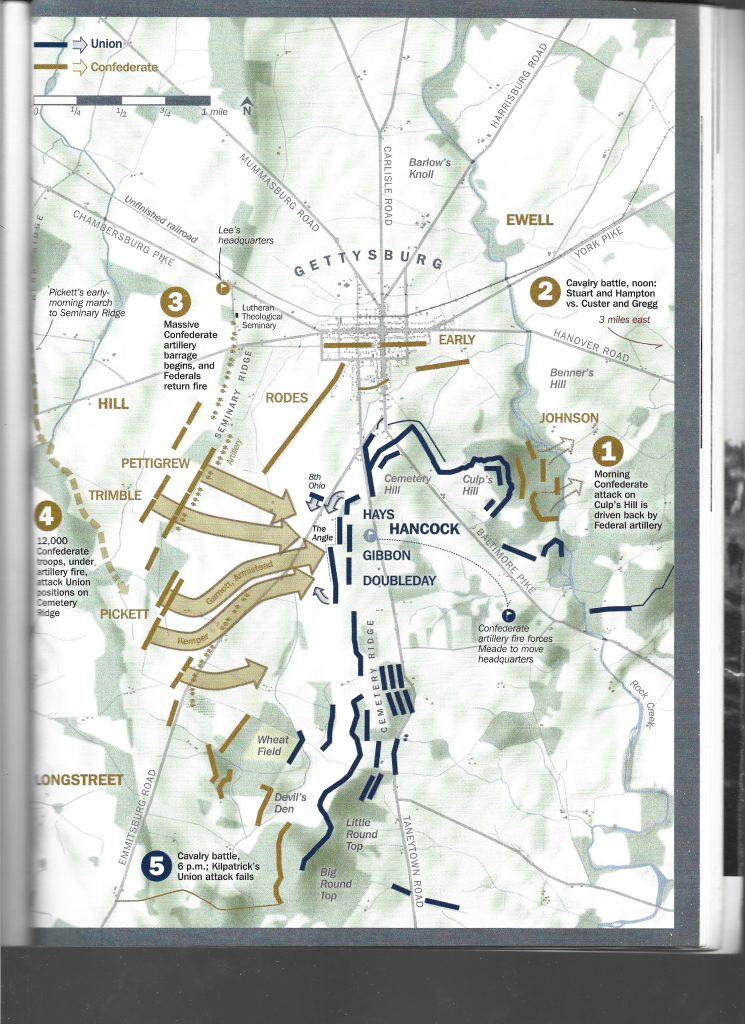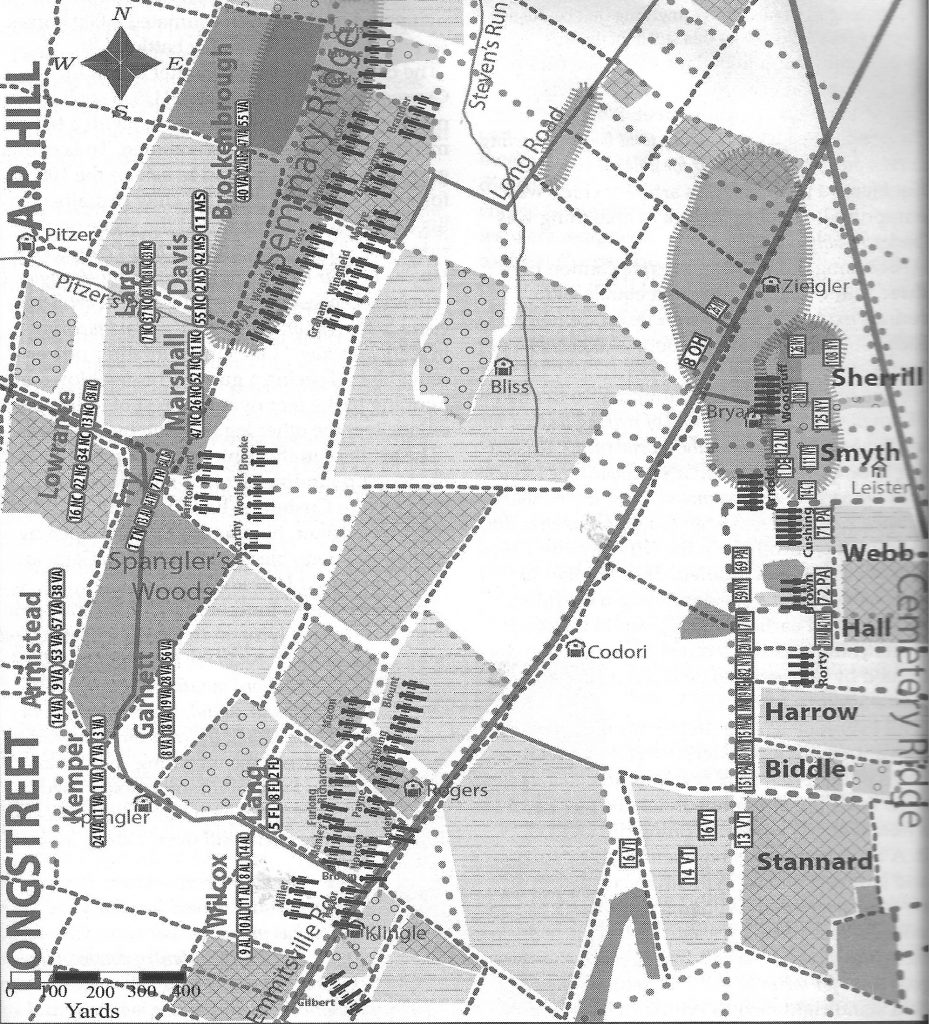Lee had convinced himself that Meade had depleted the middle of his defensive line to reinforce his flanks after the heavy – if unsuccessful – attacks of Day 2. His plan was to exploit that presumed weakness. His cannons would lay down a barrage that wouldn’t be repeated in battle until World War I. Little did he know that his plan was doomed from the start.
Lee’s plan was that the artillery would so deplete Hancock’s Second Corps defenses that Pickett’s men would walk through them. This plan had grown out of Lee’s frustration over the course and outcomes of the prior days. He had also convinced himself that Meade might just order an attack even though most of the Rebel troops were hidden behind Seminary Ridge.
Following that barrage, Lee ordered Longstreet to attack towards the cemetery. To lead this attack was the only unit that had not been engaged on Day 2 = the late-arriving division belonging to MG Pickett. Pickett’s men and other brigades hastily thrown together to support him – a total of about 12,000 men — were encamped behind the ridge. In order to attack they had to pass through two gaps in the ridge; one north and one south of Lee’s target. This meant that as they advanced each of the huge forces would have to move laterally to converge as they moved forward.

At this point in the battle, a storm that had been brewing for weeks hit Lee’s forces – in the form of faulty fuses. The artillery of the day fired three types of ammunition. Primary was the age-old solid iron cannon ball used against fortifications and troops alike. Second was canister or grape-shot, essentially a huge shotgun shell full of small pellets used against attacking infantry formations. Third was a more recent innovation: shells designed to explore in the air above the target. This is what Lee intended to use against the emplaced Union forces on the opposing ridge.
What no one in Lee’s Army knew is that these fuses were defective. A few months prior, there had been a devastating explosion at the main Confederate Arsenal in Atlanta that produced these fuses. Logisticians dispersed the contracts to other sources but it turned out that the formulation of the gunpowder in them was defective. It burned unevenly. The idea was that the artillery officers estimated the range to target and set the timer on the fuses to explode at the time in their flight that they arrived over the target; an inexact science at best, but effective when attacking an area with a large number of shells. Unfortunately for Lee and Pickett, these shells flew much farther than intended before exploding.
Just months before, Longstreet had stood next to Lee in a similar, if reverse, situation. They held the high ground at Fredericksburg while Union GEN Burnside vainly threw his army against those slopes. Lee simply refused to accept Longstreet’s plea to abandon this attack. Its outcome could hardly be expected to be different. Longstreet counselled that they should move the entire force south and then east and thereby cut off Meade from his supplies arriving from the south. Indeed, they might even be so fortunate as to seize some of these much needed supplies. Lee assured Longstreet that Pickett’s men would be attacking a much depleted Union force. Longstreet firmly believed that those 12,000 men were doomed.
For his part at the end of Day 2, Meade had presented three courses of action to his staff: withdraw, attack, continue to defend. Almost to a man they recommended the latter. His J-shaped position was strong and well-placed. They saw no advantage to either of the other options. All of his 70,000 or so infantry were in place. There was nothing more to do than wait and react accordingly.
Just after noon of Day 3, Lee unleashed his 120 cannons on the Union defenses. For over an hour, they fired thousands of rounds – many of them the fused shells – across the one mile gap between the lines. The smoke of the propellant gun powder prevented the Confederate officers from seeing the target much less assessing the damage they were doing. No sooner had Lee’s barrage begun than it was answered by the Union, who had a similar number of cannons but arrayed over much greater distance; many out of position and out of range of Pickett’s charge. One astonished Union officer observed that 9/10ths of the shells overflew their targets and continued on into the interior of the ‘J’. Shells began to explode near Meade’s HQ to the point that they thought that they were somehow being directly targeted. At the urging of his staff, Meade shifted his HQ farther east.
It didn’t take long for Meade’s forward commanders to assess Lee’s plan. They knew an infantry attack was going to follow the artillery barrage intended to soften up the defense. To lull the Confederates into thinking that their plan was working, they ceased their cannon fire as if to suggest that they had withdrawn. And then they waited. Because the artillery were indeed placed behind the infantry, they had taken heavy hits from the late-exploding shells. One unit was so badly destroyed that it withdrew towards the interior. Through the haze of gun smoke, Rebel Artillery officers spotted this movement and determined that they had successfully destroyed the defensive line. It was time to cease fire and let the infantry advance.

